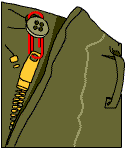Paperclips
Created | Updated Jan 12, 2012

The paperclip is a tiny, but handy, piece of twisted metal*. It is commonly used to hold pages of paper together for easy referral.
As well as clipping sheets of paper together, the device is also used for making chains during boring moments in a typical office; a smallish box of paper clips can usually make a chain some four metres long. Many manufacturers now offer paper clips in a wide variety of colours in order to spice up said chains and make them a little more exciting.
A Brief History
Johan Vaaler invented the paperclip in Norway in 1899. He patented several versions, but unfortunately the design idea was so simple that most people just worked around the patents by making tiny changes to the design itself. Thus he never made much money from an idea which was, unarguably, brillant.
A Little-known Fact about the Paperclip
During the five year long Nazi occupation of Norway, in World War II, the paperclip became a symbol of national unity. It was worn with pride even though this simple show of loyalty risked wearers being arrested, deported, or even executed.
Alternative Uses for Paperclip Chains
Paperclip chains can be useful in the following ways:
If you forget your spouse's birthday, take a small chain and connect one end to the other, thus making a loop. This loop of paperclips can then be offered as a gift in the form of a necklace or bracelet.
On snowy days, if you are worried about the commute home, take several chains of paper clips and connect them round your tyres for extra grip.
If you don't have the enthusiasm for learning to fly in the usual manner, take two chains of paper clips and whirr them round your head as fast as possible. It won't make you fly, but it will take your mind off the fact that you can't.

